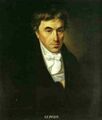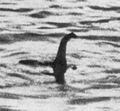Template:On This Day (nonfiction)/April 21
1552: Mathematician and astronomer Petrus Apianus dies. His works on cosmography, Astronomicum Caesareum (1540) and Cosmographicus liber (1524), were extremely influential in his time.
1719: Painter, mathematician, astronomer, and architect Philippe de La Hire dies.
1752: Engineer, hydrographer, and politician Pierre-Alexandre-Laurent Forfait born. He will design and oversee the building of ships, making structural improvements and developing techniques to improve the disposition of cargo in ships' holds.
1774: Physicist, astronomer, and mathematician Jean-Baptiste Biot born. He will establish the reality of meteorites, make an early balloon flight, and study the polarization of light.
1822: Priest and inventor Hannibal Goodwin born. He will invent and patent rolled celluloid photographic film.
1825: Mathematician Johann Friedrich Pfaff dies. He worked on partial differential equations of the first order Pfaffian systems, as they are now called, which became part of the theory of differential forms.
1882: Physicist and academic Percy Williams Bridgman born. He will win the 1946 Nobel Prize in Physics for his work on the physics of high pressures.
1910: Writer, entrepreneur, publisher and lecturer Mark Twain dies.
1934: The "Surgeon's Photograph", the most famous photo allegedly showing the Loch Ness Monster, is published in the Daily Mail. (It will be revealed as a hoax in 1999.)
1965: Physicist and academic Edward Victor Appleton dies. Appleton made pioneering contributions to radiophysics, and was awarded the Nobel Prize in Physics in 1947 for his seminal work proving the existence of the ionosphere during experiments carried out in 1924.









